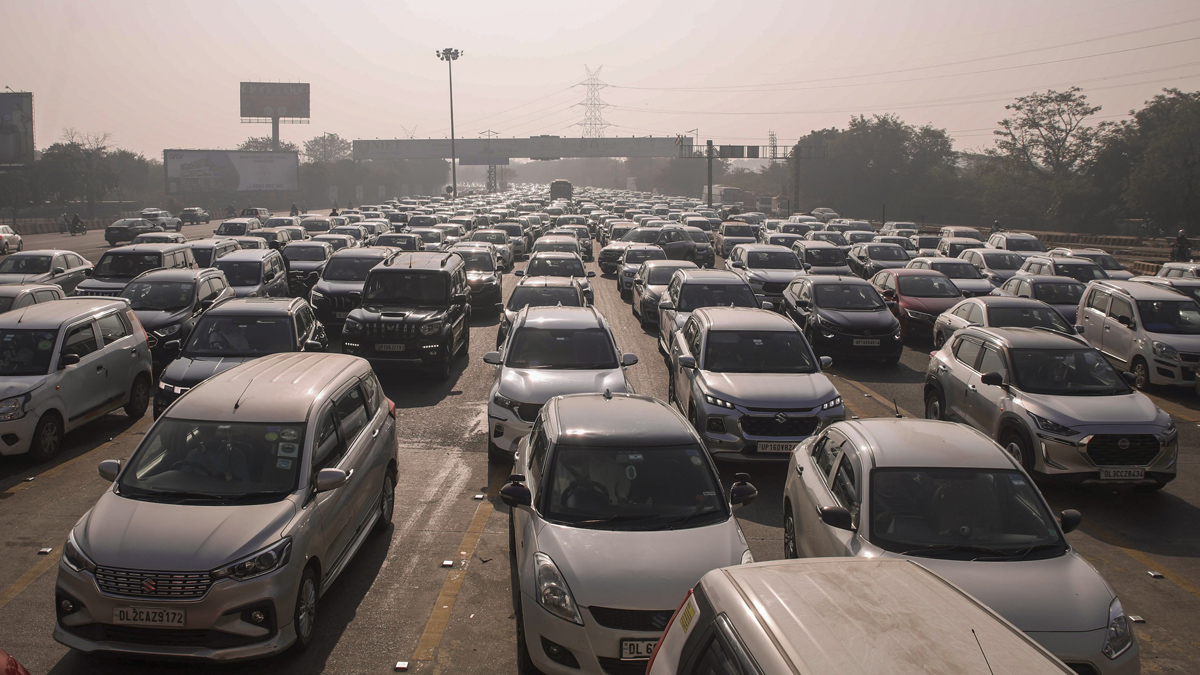Can AI and satellite imagery decongest roads? EaseMyTrip co-founder pledges ₹1 crore to solve Bengaluru’s traffic crisis
 Noida: Vehicles stuck in a traffic jam on Delhi-Noida Direct Flyway after security was heightened in view of farmers' protest march towards the national capital, in Noida, Monday, Dec. 2, 2024. (PTI Photo)(PTI12_02_2024_000042B)
Noida: Vehicles stuck in a traffic jam on Delhi-Noida Direct Flyway after security was heightened in view of farmers' protest march towards the national capital, in Noida, Monday, Dec. 2, 2024. (PTI Photo)(PTI12_02_2024_000042B)
Bengaluru's infamous traffic bottlenecks have long been the focus of rants, memes, and general annoyance. However, one entrepreneur has decided it is time to turn complaints into tangible action, while the majority have accepted that they will have to slither forward in traffic.
EaseMyTrip co-founder Prashant Pitti has committed ₹1 crore to a daring, data-driven solution that will address Bengaluru's most clogged choke points. His goal is to solve a civic issue that impacts millions of people every day by utilising satellite imagery, Google Maps data, and artificial intelligence.
Pitti’s decision to take matters into his own hands came after a particularly frustrating Saturday night commute. Sharing his experience on X (formerly Twitter), Pitti explained that he was stuck in traffic for over two hours while trying to cover just 11 kilometres. “I was stuck at one chokepoint at ORR [Outer Ring Road], where I spent 100 mins struggling to understand why there is no traffic light or cop here,” Pitti wrote.
Pitti took a proactive stance rather than adding to the city's mounting chorus of grievances. “I don’t want one more ‘Bengaluru traffic meme or rant’. I WANT TO FIX IT,” he declared. Data is the foundation of Pitti's strategy. Google introduced Road Management Insight, a tool that uses BigQuery to deliver city-level traffic data, in April 2025. Pitti intends to map Bengaluru's most congested areas and determine the precise moments when they turn into bottlenecks by utilising this tool in conjunction with satellite imagery. He thinks the Bengaluru traffic department may be able to carry out precise, focused interventions thanks to this detailed, data-driven analysis.
In addition to covering the costs of accessing Google Maps APIs, satellite imagery, and GPU computing resources needed for the project, Pitti has committed to funding the hiring of one or two experienced machine learning or AI engineers. However, the collaboration of civic authorities is essential to the success of this ambitious endeavour. In addition to assigning official teams to act on the project's findings, Pitti has publicly urged the Bruhat Bengaluru Mahanagara Palike (BBMP) and the Bengaluru Traffic Police to share their raw data feeds and APIs.
Highlighting Bengaluru’s status as India’s tech capital, Pitti remarked, “The people driving its growth deserve much better.” Although the city's traffic problems are not new, they have significantly gotten worse in recent years. As noted by NDTV, Bengaluru's fast population growth, currently over 13 million residents, along with millions of cars, poor public transport, and shoddy urban planning, has made daily commutes a misery. Hour-long commutes during peak hours are detrimental to both productivity and quality of life.
Over three lakh new private vehicles were registered in the city in the first half of 2025 alone, with almost 50,000 new vehicles added in June alone, according to a report by The Economic Times. With a startling 2,377 kilometres of cumulative traffic jams on June 11, this surge has increased Bengaluru's daily average congestion to 189.6 kilometres. The magnitude of the crisis Pitti is attempting to resolve is highlighted by these figures.
Meanwhile, Pitti's initiative has been enthusiastically embraced by social media users. His post received hundreds of comments and more than 7,000 likes in a short time. According to posts, some expressed their dissatisfaction with the ineffectiveness of the traffic police, while others suggested he seek support from political figures like Tejasvi Surya and PC Mohan.
He even shared a Google Form asking people with relevant experience to join the project to expedite collaboration. At its heart, Pitti's initiative is a rare instance of a citizen taking the initiative in a situation where public institutions have failed to do so. The city's readiness to work together and implement the suggestions made will determine whether or not this investment results in significant change.
India